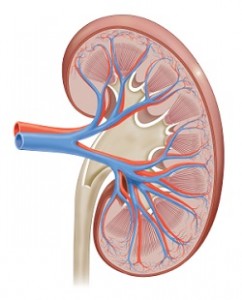Hyperparathyroidism
 Renal dysplasia, also known as multicystic dysplastic kidney (MCDK), is a relatively uncommon birth defect in which one or both of the kidneys have not developed properly. As a result, urine builds up in the affected kidney, causing cysts to form inside.
Renal dysplasia, also known as multicystic dysplastic kidney (MCDK), is a relatively uncommon birth defect in which one or both of the kidneys have not developed properly. As a result, urine builds up in the affected kidney, causing cysts to form inside.
Causes of Renal Dysplasia
Renal dysplasia may a result of a genetic condition. It may also be caused by certain prescription drugs taken by the mother during pregnancy, including drugs used to treat:
- Seizures
- High blood pressure
Renal dysplasia may be a symptom of underlying conditions of the nervous system, digestive system, urinary tract or heart or blood vessels.
Symptoms of Renal Dysplasia
In many cases, the only symptom of renal dysplasia is an enlargement of the affected kidney. Other symptoms are not as common but may include pain, urinary tract infections or high blood pressure.
Diagnosis of Renal Dysplasia
Renal dysplasia is typically diagnosed during pregnancy through an ultrasound. In some cases, renal dysplasia may not be identified until after birth, when the infant undergoes a medical examination for another condition, such as a urinary tract infection. Tests that may be used to diagnose renal dysplasia include:
- X-rays
- Blood tests
- Urinalysis
- Kidney function tests
Treatment of Renal Dysplasia
Treatment of renal dysplasia depends on the patient's individual condition. Cases of renal dysplasia affecting only one kidney with no noticeable symptoms may not need any treatment, however, regular checkups will still be necessary to ensure that the condition does not worsen. Cases of renal dysplasia that cause urinary tract infections are treated with antibiotics.
In cases where there are abnormal changes to the kidney and symptoms such as pain and high blood pressure persist, kidney removal surgery may be considered as a last resort. Most children recover well from this condition and lead healthy, successful lives.
